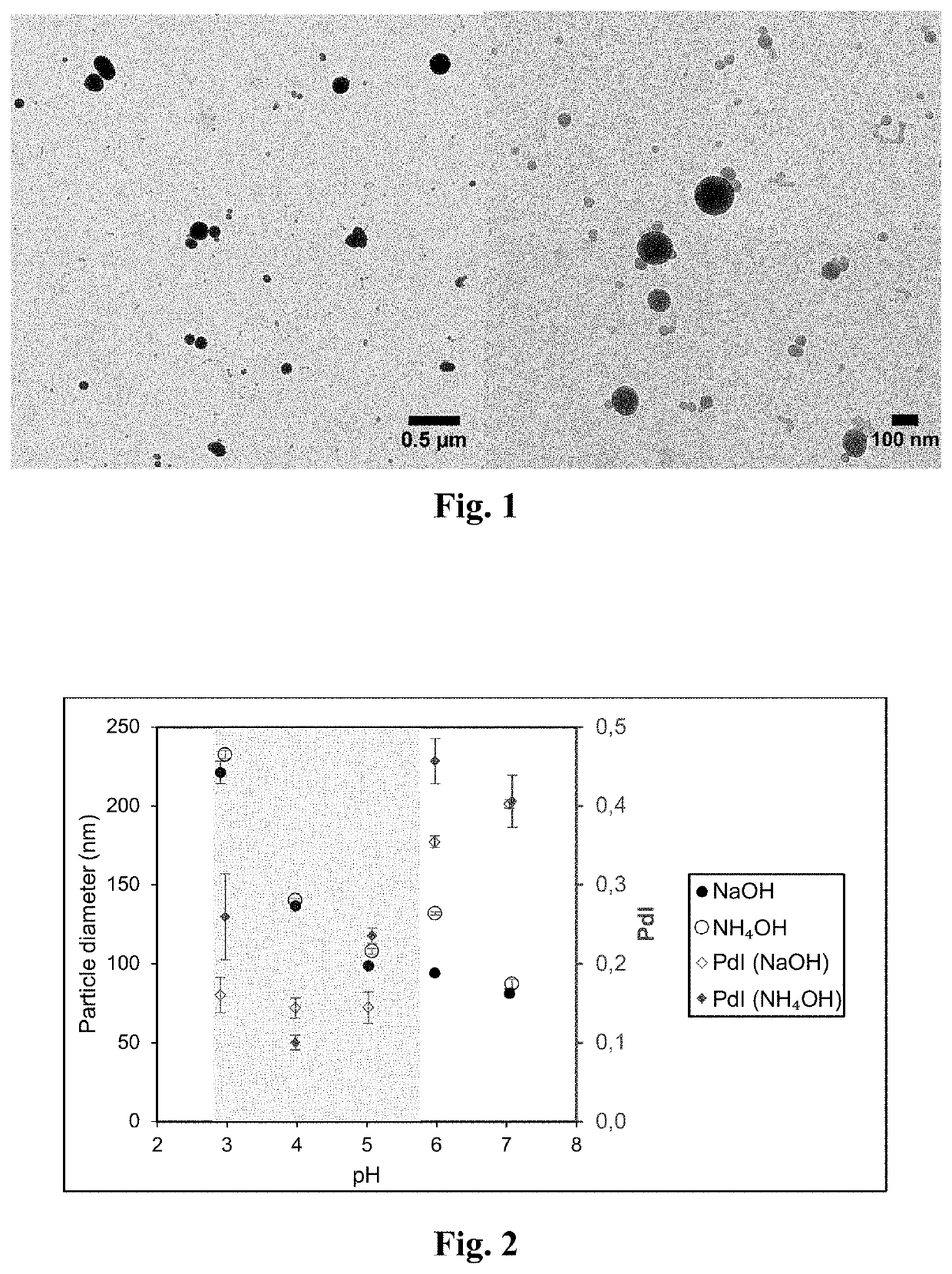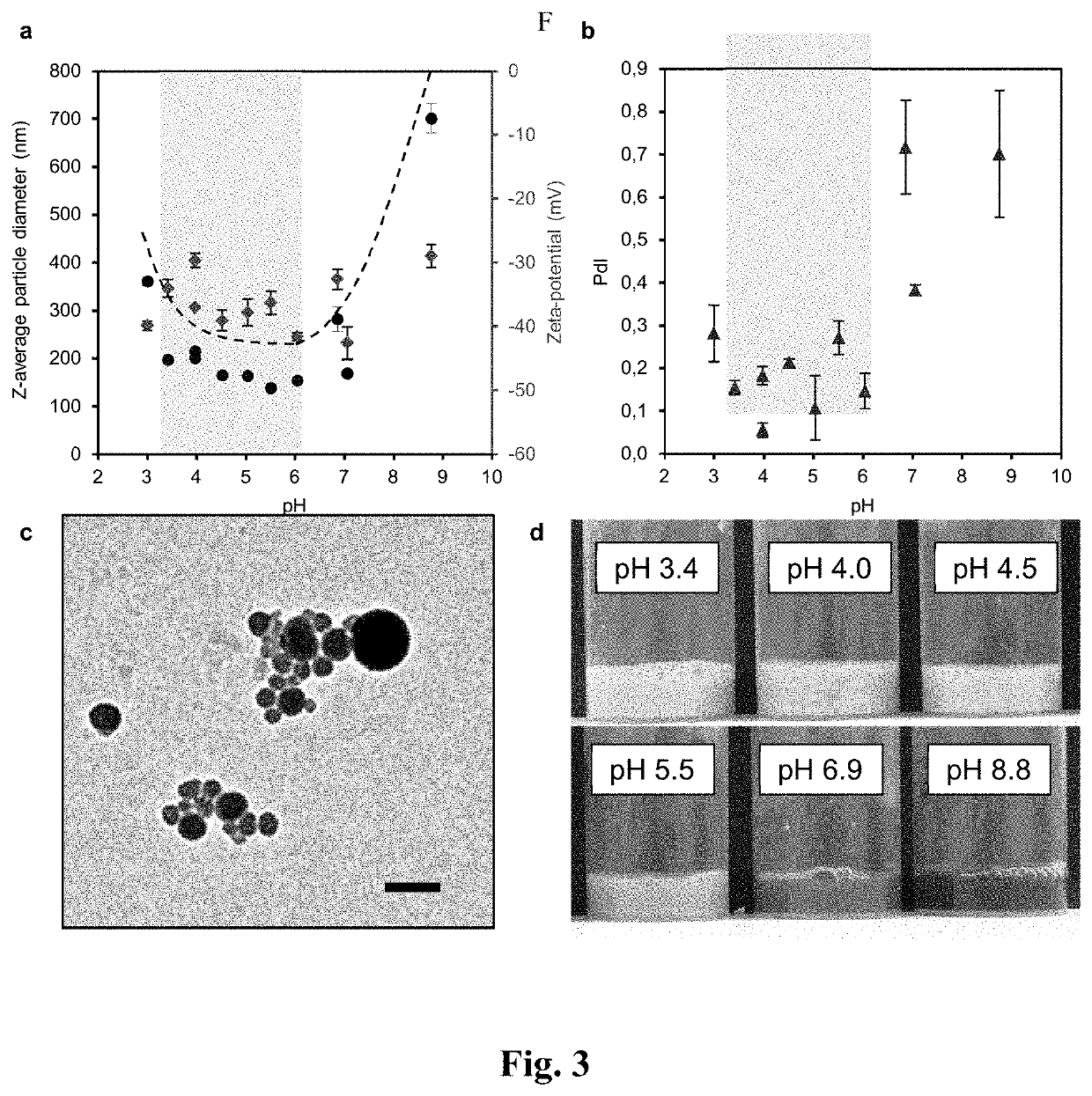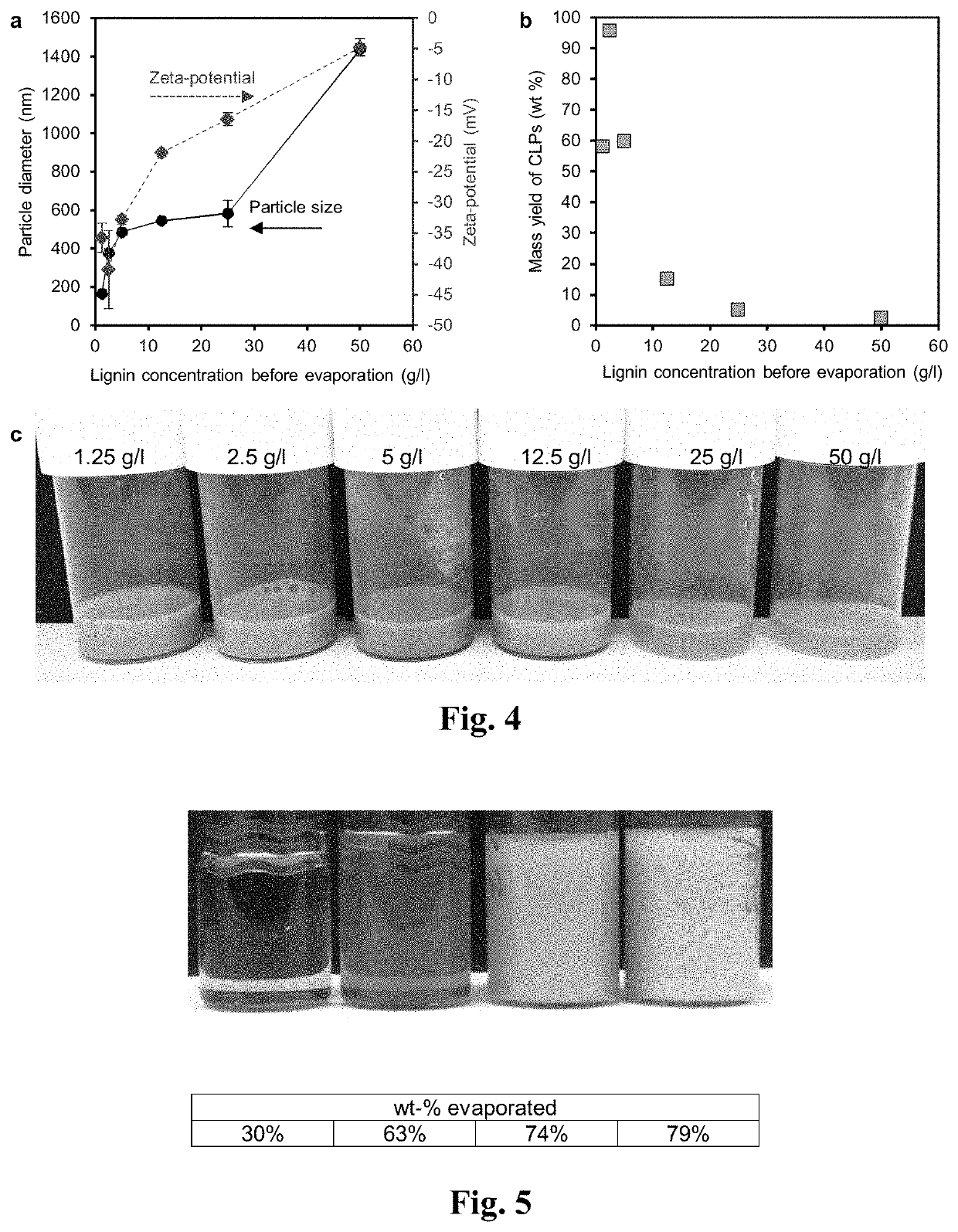Lignin particle based hydrogel and the method for preparation of lignin colloidal particles by solvent evaporation process
a technology of lignin-based hydrogels and colloidal particles, which is applied in the field of nanomaterial preparation, can solve the problems of poor compatibility with synthetic materials, high cost of approaches, and inability to meet the requirements of lignin-based material applications, so as to improve the viscosity of cnf-alginate hydrogels, avoid the effect of structure collapse in absence of clps, and improve the retention of structur
- Summary
- Abstract
- Description
- Claims
- Application Information
AI Technical Summary
Benefits of technology
Problems solved by technology
Method used
Image
Examples
example 1
on and Characterization of Colloidal Lignin Particles
[0100]This example describes preparation of CLPs by adding lignin solution into water. BIOPIVA 100, UPM softwood kraft lignin (7.5 g, dry basis) was dissolved in 150 g of solvent mixture of acetone-water 3:1 w / w. After three hours of stirring at 22° C., the solution was filtered through a glass microfiber filter (Whatman, Grade GF / F), and immersed into vigorously stirred deionized water (450 g) at 22° C. The formed colloid was diluted ˜20 times and subjected to particle dynamic light scattering analysis.
[0101]FIG. 1 shows TEM micrographs of colloidal lignin particles produced by adding lignin solution in acetone-water 3:1 w / w into deionized water. The TEM images were acquired in bright-field mode on a FEevaI Tecnai 12 operating at 120 kV.
[0102]As will appear, by the method described, colloidal lignin particles were obtained having a Z-average particle diameter of 170±3 nm and PdI of 0.15±0.02 (N=3) was obtained. The CLP dispersion...
example 2
pH on Particle Properties of Colloidal Lignin Particles
[0103]The aim of this example is to show the effect of pH on the particle size of colloidal lignin particles. Lignin solutions at 1 wt % concentration in acetone-water 3:1 w / w solvent mixture were adjusted to predefined pH values by adding small amounts of aqueous hydrochloric acid, sodium hydroxide, or ammonium hydroxide. These lignin solutions were used for the preparation of colloidal lignin particles by a rapid pouring of deionized water as non-solvent into the lignin solution.
[0104]FIG. 2 shows the effect of pH on particle size of the lignin colloids. More specifically, FIG. 2 shows CLP formation by direct precipitation. The effect of pH on Z-average particle diameter (•●) and polydispersity index (♦⋄) of colloidal lignin particles prepared by adding deionized water (120 g) into 40 g of 1 wt % lignin solution in acetone-water 3:1 w / w solvent mixture. Adjustment of pH was made using aqueous hydrochloric acid, sodium hydroxid...
example 3
reparation of Lignin Particles by Acetone Evaporation: Effect of pH
[0107]It is an aim of this example is to show that it is possible to control the particle size of CLPs formed by solvent evaporation of lignin solutions with predefined pH.
[0108]The initial pH of lignin solution (10 g / l) was adjusted with aqueous solutions of 1 M hydrochloric acid or 1 M sodium hydroxide. CLPs were thereafter formed and characterized as explained in Example 1.
[0109]FIG. 3 illustrates the Effect of pH on (a) particle size (•) and zeta-potential (♦) and (b) polydispersity index (PdI). (c) a TEM micrograph of CLPs at pH 4. The scale bar is 200 nm.
[0110]FIG. 3 (d) shows the appearance of colloidal dispersion formed at various pH values. CLPs at a final concentration of ˜3 g / l. were prepared by rotary evaporation of lignin solutions in acetone-water 3:1 w / w solvent mixture.
[0111]The results in FIG. 3a show that particle size decreased from 361 nm to 138 nm with increasing pH from 3 to 6. Associated change...
PUM
| Property | Measurement | Unit |
|---|---|---|
| pressure | aaaaa | aaaaa |
| mean particle diameter | aaaaa | aaaaa |
| particle size | aaaaa | aaaaa |
Abstract
Description
Claims
Application Information
 Login to View More
Login to View More - R&D
- Intellectual Property
- Life Sciences
- Materials
- Tech Scout
- Unparalleled Data Quality
- Higher Quality Content
- 60% Fewer Hallucinations
Browse by: Latest US Patents, China's latest patents, Technical Efficacy Thesaurus, Application Domain, Technology Topic, Popular Technical Reports.
© 2025 PatSnap. All rights reserved.Legal|Privacy policy|Modern Slavery Act Transparency Statement|Sitemap|About US| Contact US: help@patsnap.com



